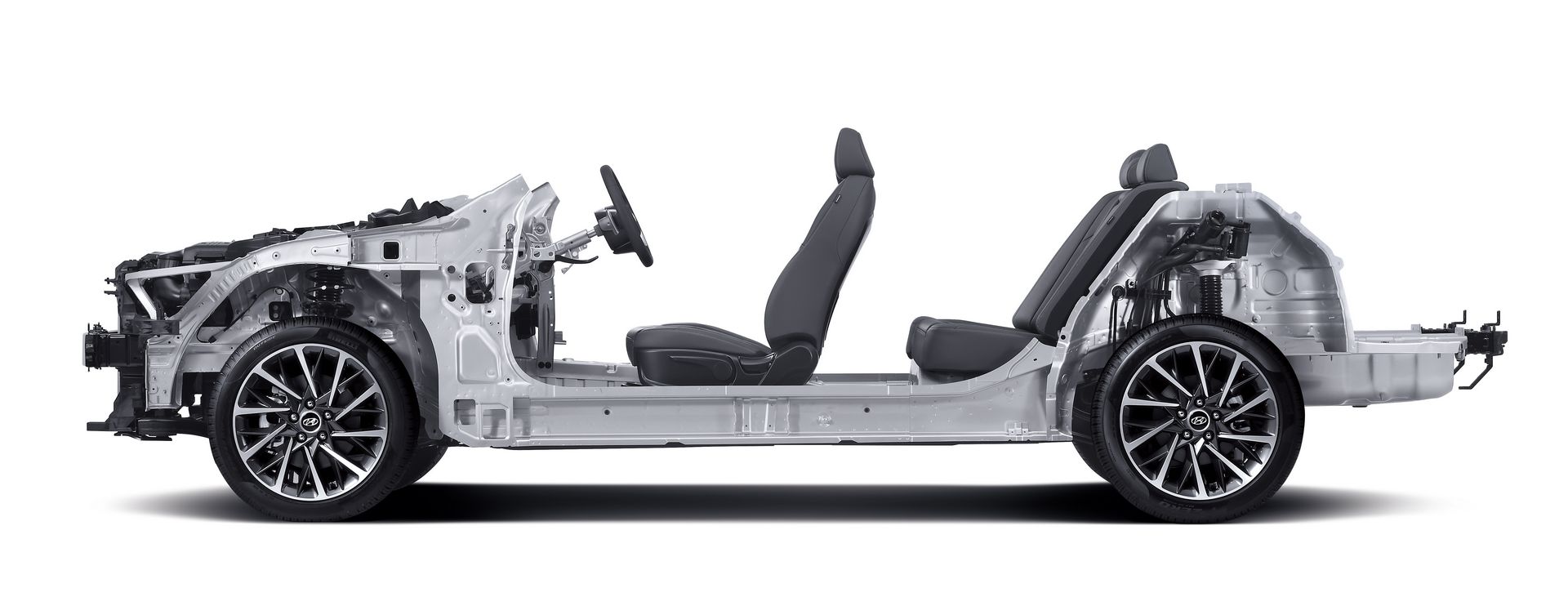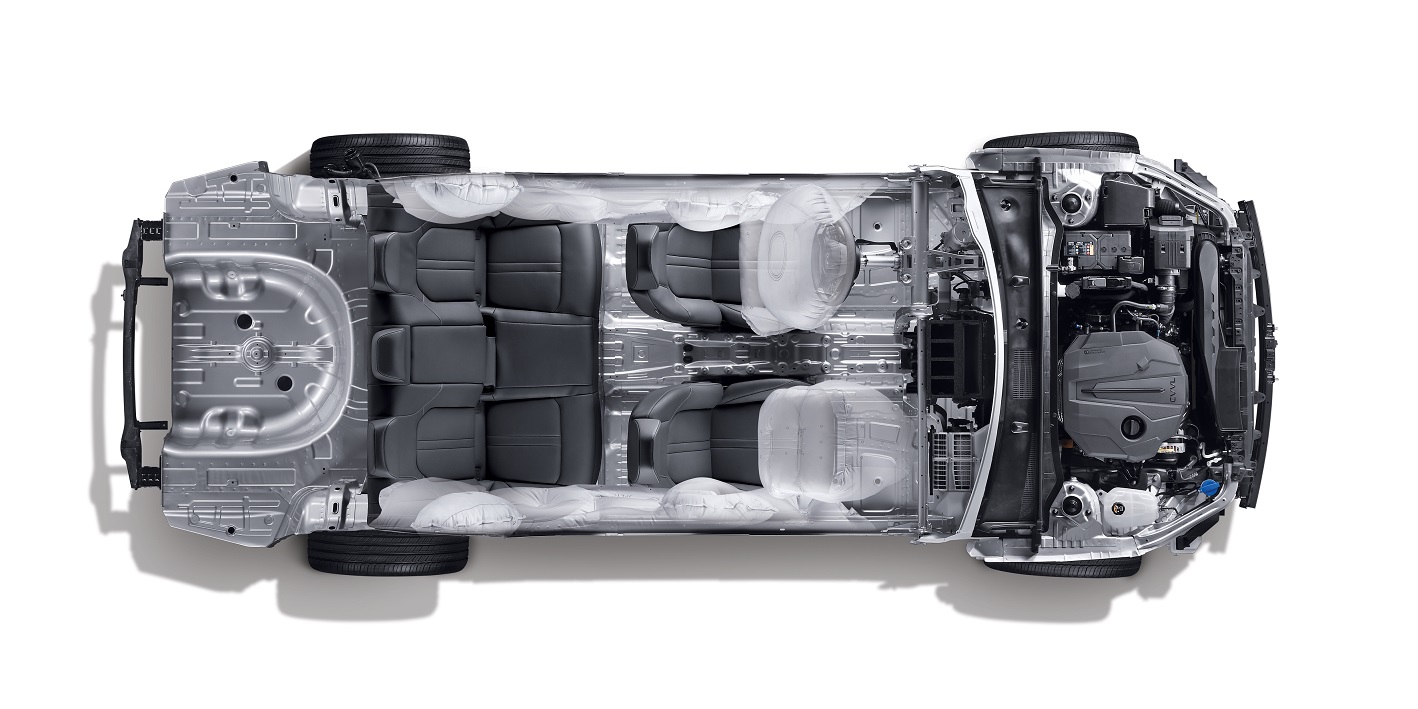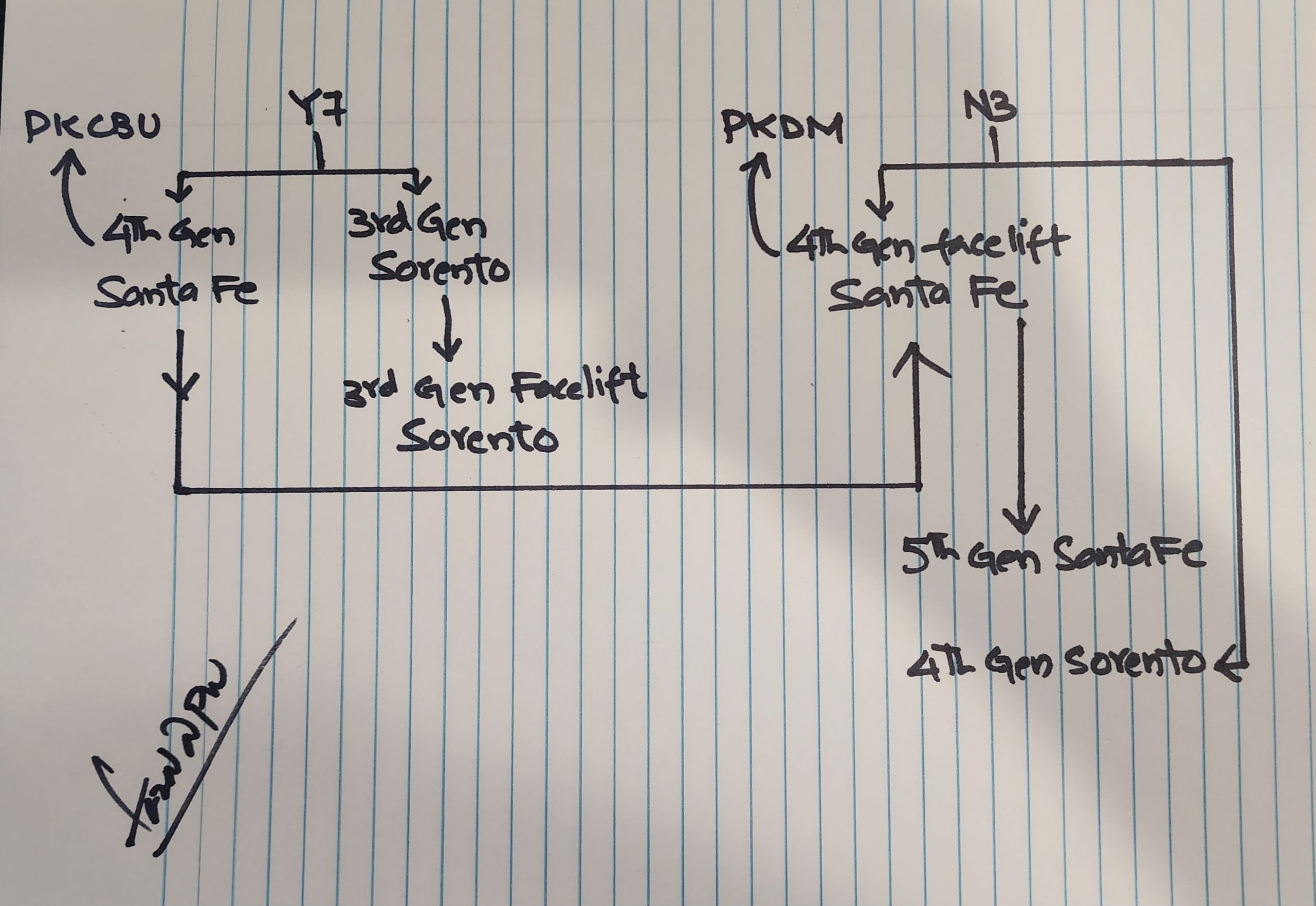
[ad_1]
So, at last, PKDM ( Pakistan domestic model) Santa Fe is launched, and now almost everyone knows the full details and features of what the model offers. I will not go into that detail as it’s already covered extensively. Anyways, like in typical fashion, when a new model is introduced, a new discussion starts & that’s between the competitors and a head-to-head comparison, which is normal. I am sure the same is true after Santa Fe’s launch, and people have started comparing the Kia Sorento with its corporate cousin, the Hyundai Santa Fe.
I am not in the market for buying any of these vehicles, nor here to criticize or favor any model. I will leave it to genuine buyers to make their selection. After all, they will be driving a certain model and are paying for it. In today’s post, I will just briefly, in layman’s language, go over the chassis and platform comparison between the two models. I already did so in my previous posts, but I need to shed some light again. This post aims to enlighten the readers and prospective buyers so they can make a better decision.
In the Auto industry, developing an entire model is time-consuming and costly and costs hundreds of millions of dollars. Most of the engineering is already performed with platform sharing, and multiple models can be generated. Also, it helps car makers to reduce the overall cost and develop models for various segments like economy or premium.
Y-Platform
Hyundai developed a Y-platform in the late 80’s for its models. Hyundai took over the KIA brand in 1998, and since then, Hyundai and Kia have been sharing this platform, and multiple models were based across the brand. The Y-platform evolved over the years with Y2,3,4,5,6 & 7 suffixes. The Y7 is the last of the series, and the N-platform started replacing it in 2019 onwards.
The PKDM Santa Fe, 4th generation with chassis code “TM,” went into production in 2018 and got a major facelift in 2020. Hyundai Santa Fe is the nonidentical twin of the Kia Sorento, and both models have been sharing technical under the skin.
When the 4th generation Santa Fe was introduced in 2018, it shared its underpinning ( Y-Platform, Y7 to be specific ) with the 3rd generation Sorento chassis code “UM” ( the same model we currently have in Pakistan). The 3rd gen Sorento began production in 2014 and had a facelift in 2018. It’s pertinent to mention that Hyundai Nishat introduced a CBU imported Santa Fe back in 2019, and that was a pre-facelift model based on the Y-7 platform.
N-Platform
Back then, Hyundai and Kia were developing a new modular platform that would be the basis of many upcoming new models for both brands. The global modular platform is to be more rigid, lighter, safer, fuel-efficient, and flexible in providing chassis for unibody crossovers, cars, and vans.
In 2019, the Kia-Hyundai N-series platform came into being to meet all these expectations. Hyundai N platform, the third generation of the platform, assisted the Hyundai group (Kia & Hyundai) in developing and introducing multiple models worldwide. It improved design options, overall safety, and fuel efficiency and provided a basis for implementing Hybrid technology (self-charging & plugin ). Although KIA-Hyundai has a dedicated GMP platform for their battery electric vehicles, some EVs from the Hyundai group are also utilizing the N3 platform, which can help you understand the flexibility the chassis provides.
The new platform also revolutionized/improved the driving dynamics and performance. The platform reduced the NVH ( Noise, vibration, and harshness ), sound absorbing reinforcement was used at sensitive locations, reduced air drag undercarriage, and overall, a comfortable driving experience with reduced cabin noise was achieved.
Passive safety also improved to a major extent. The new chassis has a multi-load path to transfer impact forces after the crash, diluting and absorbing it away from the passenger compartment. Extensive use of hot stamping is implemented so the passenger compartment is not compromised under impact.
The safety design of the chassis also resulted in vehicle tires pushing outwards in a small frontal overlap collision, reducing the impact in the passenger cabin but also helping reduce the vehicle spin after the crash. The chassis utilizes high-strength steel with increased stiffness and rigidity, and all this also helps in improving stability & driving pleasure.
Overall, the current N-platform is a game-changing foundation for the Hyundai group with reduced cost of engineering, shared components, chassis safety design, electronics, engines, transmission & other mechanical components across multiple models across Kia & Hyundai.
N-platform underpins front-wheel drive/all-wheel drive D-segment vehicles, but some larger C-segment vehicles from Hyundai/Kia also utilize it, specifically crossovers. The current 8th generation Sonata [same as in Pakistan] was the first model implementing this new chassis in 2019. Since then, it has been in use by all current new generations of models, for example, Kia K5, Kia Carnival, Hyundai Staria, Tucson(4th gen), Sportage (5th gen), as well as the new 4th Gen Sorento.
As additional info, Hyundai group also has a K1, K2 & K3- Platform, which they utilize to develop A, B & C segment vehicles respectively. Similarly, Genesis has a dedicated range of platforms. Remember there is a flip side of platform sharing; an issue with one component can risk multiple models & across brands, and we have seen this extensively with KIA and Hyundai in recent years.
Hyundai Santa Fe – More Than Just A Facelift
As earlier mentioned, the 4th generation, with chassis code “TM,” went into production in 2018 & got a major facelift in 2020. 5th gen of the Hyundai Santa Fe is already revealed, but it’s not yet for sale, although it will hit European, North American, Korean, and other markets in the next 4 to 6 months.
Hyundai Nishat has introduced the facelifted model of Santa FE. Yes, for now, it’s a relevant model concerning overseas models; however, soon, this will change, and basically, our Pakistani market will be a generation behind compared to an international model. But there will still be a lot of relevance in our PKDM Santa-Fe, and that’s positive.
Usually, car companies introduce facelifts during the life cycle of a particular model generation, mostly somewhere around mid or a little later. The idea is to keep the model relevant and attractive to the public and improve sales. Generally, the facelift includes updates in aesthetics in or out & other minor improvements. In the case of the 4th Gen Santa Fe facelift, there were some changes on the exterior, specifically the front fascia, and the same goes for the interior, where there was a new dashboard layout.
But there is more than that & normally, such things don’t happen in the automotive world. The facelifted 4th Gen Santa FE shifted to an all-new N3 platform. This was an extremely out-of-the-box approach & basically, Hyundai did so to evaluate the new chassis under a D-segment crossover vehicle, also one of their best-selling global models, although the N3 also went under the 8th Gen Sonata by that time.
The new platform made a lot of improvements in the overall performance, ride quality, and safety, and besides that, Hyundai was able to deliver a hybrid and plugin hybrid variant, which was somewhat not possible with the pre-facelift version of Santa Fe. The facelifted model got a lot of praise for all these improvements.
Basically, this positive customer feedback and success will help generate repeat customers for the 5th gen Santa FE. The 5th generation Santa Fe carries over the same platform, and most of the mechanicals from the 4th gen Santa Fe facelift obviously with improvements. Yes, the 5th generation Santa Fe is more modern, featured, equipped, and has an entirely new exterior and interior. However, it is still technically relevant to the 4th Gen Santa Fe facelift in Pakistan.
So, when you compare a PKDM Sorento with PKDM Santa Fe, please remember that Santa Fe might soon be an older generation, but Santa Fe is based on an advanced relevant & modern platform. Yes, 3.5LV6 is an attraction on Sorento, but then that’s an FWD only, and when it comes to fuel economy, Santa Fe will be an ideal choice, being a Hybrid, but obviously with a high sticker price compared to Sorento.
I am sure you will now wonder why Kia Pakistan can’t introduce Hybrid for the Sorento, and it’s already explained in this detailed post above. In brief, the 3rd generation Sorento/UM facelift [we currently have in Pakistan] never adopted the newer chassis, and the hybrid or plugin hybrid was not an option.
The 4th gen Sorento is certainly available with a hybrid model and the same setup as the PKDM Santa Fe Hybrid because it moved to a new chassis / “N3” Platform. KIA Pakistan should start thinking seriously if they want to remain relevant & attractive in the D-segment. It will have an edge because it will also be a newer generation currently overseas. We will not see 5th-generation Santa Fe in Pakistan for at least four years.
The current Sorento in Pakistan is just a little over two years old, and I don’t see a switch to 4th gen anytime soon in Pakistan, so we have to wait. By the way, 4th gen Sorento also got a facelift recently overseas, as it’s already been in production for three years. I am sharing a poorly drawn sketch/ flow diagram to explain the platform adaptation.
Final Thoughts on Hyundai Santa Fe
I believe, and again, this is just my opinion, and I may be 100% wrong, that Hyundai Nishat is a little late in launching this model, and it should have been somewhere in early 2021 before the auto policy expiry in June 2021. This way, they would have also got the green field status and much larger incentives, and back then, economy and exchange rates were also better. But then, globally, there were chip shortages and backlogs in production, and companies were recovering from COVID-19.
After the 2016-21 auto policy expires, the new 2021-26 auto policy brought incentives for hybrids with lower duties [4% on hybrid components instead of 30%]. The policy is now almost two years into effect. Nishat could have introduced Santa Fe a little earlier and optimized the hybrid policy incentives; that way, our domestic model and generation could have aligned with the global. Well, there is another opinion in this regard.
Hyundai Nishat was waiting and could get cheaper discontinued CKD kits and other related parts, besides assembly jigs and machinery probably dismantled in the outside world as this 4th generation production is ceasing in the global market. In this case, the principal car company, Hyundai, does share their global product line timeline, and Hyundai Nishat was well aware of when approximately the global launch of the 5th gen will be executed.
Regardless of all this, with the current crisis of the economy and highly high-interest rates and car sales already down, the arrival of a new model in our market is a great step, and we should all welcome it. We hope that Hyundai Nishat will ensure that customers who booked their orders receive their vehicles on time and that black-marketing and unethical trend of premium is strictly put in check.
“Y” is for YES and “N” is for “NO”…. BUT this time “N” is for sure better, more modern & advanced than “Y.” Share in comments if you are YES or NO.
[ad_2]


